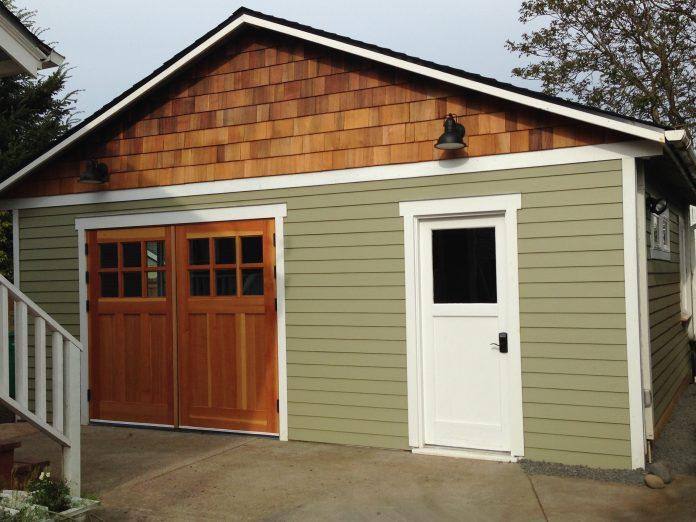Constructing an Accessory Dwelling Unit (ADU) or granny flat can be an intricate process with ADU costs that are highly dependent on factors like the ADU’s type, size, and unique attributes. While numerous tools are available online to assist homeowners in gauging specific property-related expenses, gaining a broader perspective on the pivotal costs is essential. Below are eight crucial adu costs homeowners should meticulously consider, each significant in its own right:
1. Consultation Expenses
When venturing into ADU or granny flat construction, the engagement of a consultant, be it a designer, architect, surveyor, structural or energy engineer, or permitting expert, is inevitable. Architectural fees usually constitute 8-15% of the total ADU budget. Enlisting professional advice is instrumental as it can proffer savings on various project components, emphasizing the importance of allocating an adequate budget for expert consultations.
2. Permit Acquisition
Securing permits is a cardinal consideration, often absorbing a substantial budget segment. While permit costs fluctuate across jurisdictions, they can amount to as much as $20,000 in specific locales. Opting to bypass permits may reduce immediate expenses. Still, it could incur heightened remedial costs in the long run due to non-compliance with code standards or deter potential buyers due to perceived unreliability.
3. Miscellaneous Charges
Besides permitting fees, miscellaneous charges may arise, contingent on the ADU’s dimensions, type, and geographical location. For instance, some regions, like Santa Cruz County, require environmental fees and ADUs exceeding 750 sq. ft. May incur impact fees. Researching these potential additional expenses meticulously and incorporating them into the budget is crucial.
4. Site Preparation Costs
Preparing a site for ADU construction involves various unforeseen expenses. Many properties require landscaping alterations, including tree removal, excavation, or demolition. Deploying heavy machinery like bulldozers can escalate ADU costs. Thus, homeowners should anticipate these expenditures in their budgetary planning.
5. Labor Costs in Construction
Construction labor is an integral component of the ADU budget, with extended timelines potentially augmenting the overall expense. While ADUs are envisioned as quick solutions for affordable housing, actual completion can range between 9-12 months. The degree of intricacy and involvement can significantly alter the budget, underscoring the value of accurate time and cost estimations, potentially facilitated by a consultant.
6. Supplementary Construction Expenditures
Beyond labor and contractor fees, ancillary costs such as debris removal, site security during construction, and port-a-potty rentals might emerge. Each property’s unique conditions and accessibility pose distinct challenges affecting these ancillary costs. Hence, discussing specific needs and allowing contractors to conduct site visits is pivotal to obtaining a holistic view of all prospective costs.
7. Utility Upgrade Expenses
Utility upgrades can be unexpected yet substantial expenses, especially for older homes not equipped to accommodate an additional unit. Addressing this upfront is paramount, with upgrades often costing several thousand dollars. Proper planning ensures these utility enhancements are not sidelined or relegated to last-minute considerations, preventing future complications.
8. Interior Finishing Costs
Homeowners’ aesthetic and functional preferences dictate the proportion of the budget allocated to interior finishes. During the planning and budgeting phase, reflecting on the ADU’s intended use and the importance of premium finishes is essential.
Additional Considerations and Insights
Understanding these costs is pivotal, but homeowners should also know local zoning regulations, market trends, and long-term goals. Making well-informed judgments that balance aspiration and reality requires carefully assessing the economic viability and return on investment (ROI) of building an ADU.
It is also quite advantageous to research funding options and related tax consequences. Working with financial experts and real estate specialists who can provide insights into maximizing budget allocations, securing financing, and navigating tax situations can help create a smoother path through the challenging ADU construction process.
Common Situations
For example, a homeowner seeking to construct an ADU in a region with stringent environmental regulations could need to set aside additional funds for compliance. In contrast, a homeowner living in a bustling urban area might encounter more significant labor costs due to strong demand. Like picking important, valuable components, selecting opulent finishes may require a more lavish outlay of funds.
Conclusion
Numerous components of building an ADU could be impacted by anything from consultation fees to unanticipated upgrade costs. Complete knowledge of these elements, thorough research, rigorous planning, and professional support can ease financial strain and improve the smoothness of the building. As they travel through this challenging process, homeowners must keep an eye on pricing and match them with their needs, preferences, and long-term goals to create a harmonious fusion of utility, beauty, and financial responsibility.
